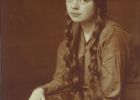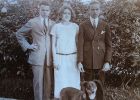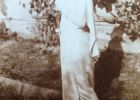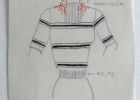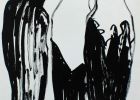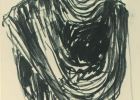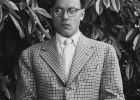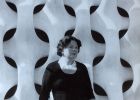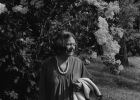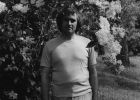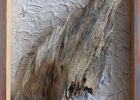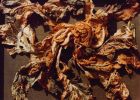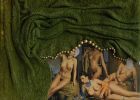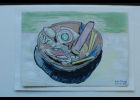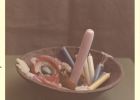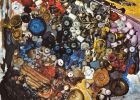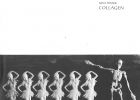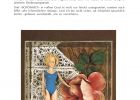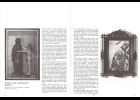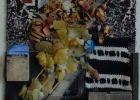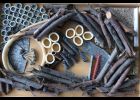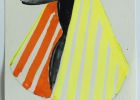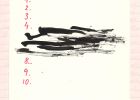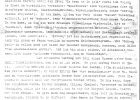Flusser's Take on Media Pedagogy
There is no non-medial perception. However, the apparatus producing techno-images tends to make us believe in something like an immediate perception. It suggests that we do not have to learn to decipher the programs behind those images. There is no possible revolution against this mechanism within the world it has created. We need to learn how to analyze these programs and to use them ourselves. Therefore, we need a pedagogy that is also - but not only - media pedagogy and exceeds the conventional realm of media literacy. Can any kind of pedagogy afford to exclude an aspect of the world as central as mediality? Media pedagogy should not be an addition to pedagogy but rather one of its integral parts. It has to teach a critique of images. We have to learn to distrust our own eyes. And we have to realize the slumbering potential for dialogue in the communication structures. We all have to become programmers. Otherwise society will decompose into factions of producers and recipients. And all of this will have to take place in our schools that otherwise will become obsolete and leave our children without the tools of understanding, criticizing and changing the world. Then, democracy would be no longer tenable.
Flusser and Descartes. The Unremitting Mindfulness of Thinking and Being
Of all modern scholars, Descartes is probably the one who has met with most criticism, and even though his formulation of the cogito sounds pretty obvious, Hobbes, Locke, Leibniz, Spinoza, Hume, Kant, Nietzsche, Heidegger, Sartre and Žižek have repeatedly tried to poke holes in his ideas. The lifelong effects of the Cartesian doubt worried Vilém Flusser too. To him, Cartesianism is Christianity through and through. What exactly, in Flusser’s view, is so unacceptable about the Cartesian doubt, then? Why does Flusser identify Descartes with Christianity? Can we appreciate Flusser’s concern with the Cartesian doubt without losing the excitement and intimacy of grappling with Descartes’ metaphysics? Of course, Flusser’s critique is not mainstream; and we can even hear traces of Heidegger’s voice in the background. Still, Flusser’s objection is unique and interesting, making it a refreshing alternative in the scholarly discussion of Descartes. One aim of the paper is to turn the sword of Flusser’s critique of the Cartesian doubt against Descartes’ own detractors.
Regina Klaber Thusek und Vilém Flusser. Schönheit versus Hübschheit
Between 1973 and 1979, Vilém Flusser was friends with the artist Regina Klaber Thusek (born 1900, Römerstadt, d. 1983, Merano). Like Flusser, Klaber Thusek had a circle of friends that was international, and that showed a propensity for people with Jewish roots whose lives had been shaped by the Holocaust. Klaber Thusek, who traced her Jewish background through her father, immediately felt an affinity with Flusser, the Prague Jew. They met for the most part in Merano at the time both were living there, although the friendship culminated in a trip to Provence in May 1979. This essay, which briefly narrates Klaber Thusek’s life and her meeting with Flusser, is the result of several years of study of the artist’s estate, now held at the archive of the Palais Maming Museum in Merano. It contains extracts from the artist’s journal pertaining directly to Flusser.
Vilém Flusser, escritor-pensador. Modos de la escritura en El universo de las imagines técnicas
This article is part of a larger investigation about three “writer-thinkers”: Giorgio Agamben (Rome, 1942), Héctor Libertella (Bahía Blanca, 1945 – Buenos Aires, 2006), and Vilém Flusser (Praga, 1920 - 1991). As a “writer-thinker” Vilém Flusser proposes that these notions are reversible, in the same way that he stated that “active” and “passive” were no longer differentiable. His essays are based upon a strong reflection on language, which is made through the process of writing. In many ways, he uses writing to think, and thinking to write. This paper further explores his use of etymology, definitions, series, as well as the nature of writing and fiction, in order to write and think.
Autotelic Digital Play: Flusser and the Gesture of Smoking a Pipe
This essay takes the form of a slide show that juxtaposes selected quotes from various authors and primarily from Vilém Flusser’s essay “The Gesture of Smoking a Pipe.” These excerpts are accompanied by a selection of short video documentaries of interactive installations created by some of my former students. This juxtaposition of quotes and videos, places side-by-side Flusser’s description of ritualistic, impractical everyday gestures, and the playfulness of interactive art experiences. As Ian Bogost argues in his essay “The Cigarette of this Century,” our 21st century smartphone addiction is comparable to the 20th century cigarette addiction. By contrast, could interactive art provide the same kind of magical, autotelic experience, away from our production and communication concerns, as pipe smoking has provided Flusser?
A slide showAstúcias do Design
Today there is a plurality of design concepts and trends. After a brief presentation of such multifaceted perspectives, this article aims to discuss Vilém Flusser’s concept of design in order to emphasize its originality, which unfortunately has not been sufficiently brought into the light, especially by those who are both practically and/or theoretically involved with design. Moreover, it is a concept that, for its originality, adds complexity to that which is the backbone of design: the notion of project.
Um diálogo entre Flusser e Heidegger: o ser no universo
To Flusser, technical images create different meanings and realities, leading to an inversion of our “being-in-the-world” to a “being-face-to-face-with-the-image.” In this situation, the distinction between real and imagined, then, would no longer make sense, since only the image itself becomes something concrete. Thus, according to the author, we end up facing back the objective world. Regarding this statement, we propose, in this paper, through a dialog between Heidegger and Flusser, a discussion about being in the universe of technical images.
Aula em fluxo: arte, comunicação, educação
By exploring performance concepts, this article seeks to deepen and systematize epistemological, aesthetic, and technical matters related to the interfaces between communication, education and art. To this end, it calls upon transdisciplinary methodologies implicated in phenomenological research. It further seeks the ongoing integration between theoretical and technical experiences, as well as scientific methods and creative artistic processes.
Flusser: um pensador visionário
A visionary thinker is one who thinks for the future and, accordingly, is somehow displaced in his/her own time. This article presents some of the reasons that lead us to consider Flusser as a visionary thinker. The influence of his work, especially in Brazil, is emerging with increasing power. This is a reliable indicator of the thesis concerning his ability to anticipate future issues. There are reasons, detectable nowadays, explaining why at the time Flusser wrote, his work was not understood in its full scope. Some of Flusser’s major conceptual concerns will be discussed as previews of the contemporary cultural scenario.
Mensch oder Landschaft – was war zuerst da? Antworten aus Vilém Flussers Vogelflüge
The essay is dedicated to the relationship of nature and culture. Landscapes are formed by natural and cultural influences. Cultural influences include two components: the changes on the land made by men and the changing ideas about landscape. Landscapes are concepts; therefore they cannot exist without men. Flusser explores this theme by describing his visit to the French Jura Mountains. He outlines how, first animals and later men used the Ofenpass, a pathway in the Alps. Separated river valleys were transformed from natural areas to landscapes, which can be regarded as men’s homes.
